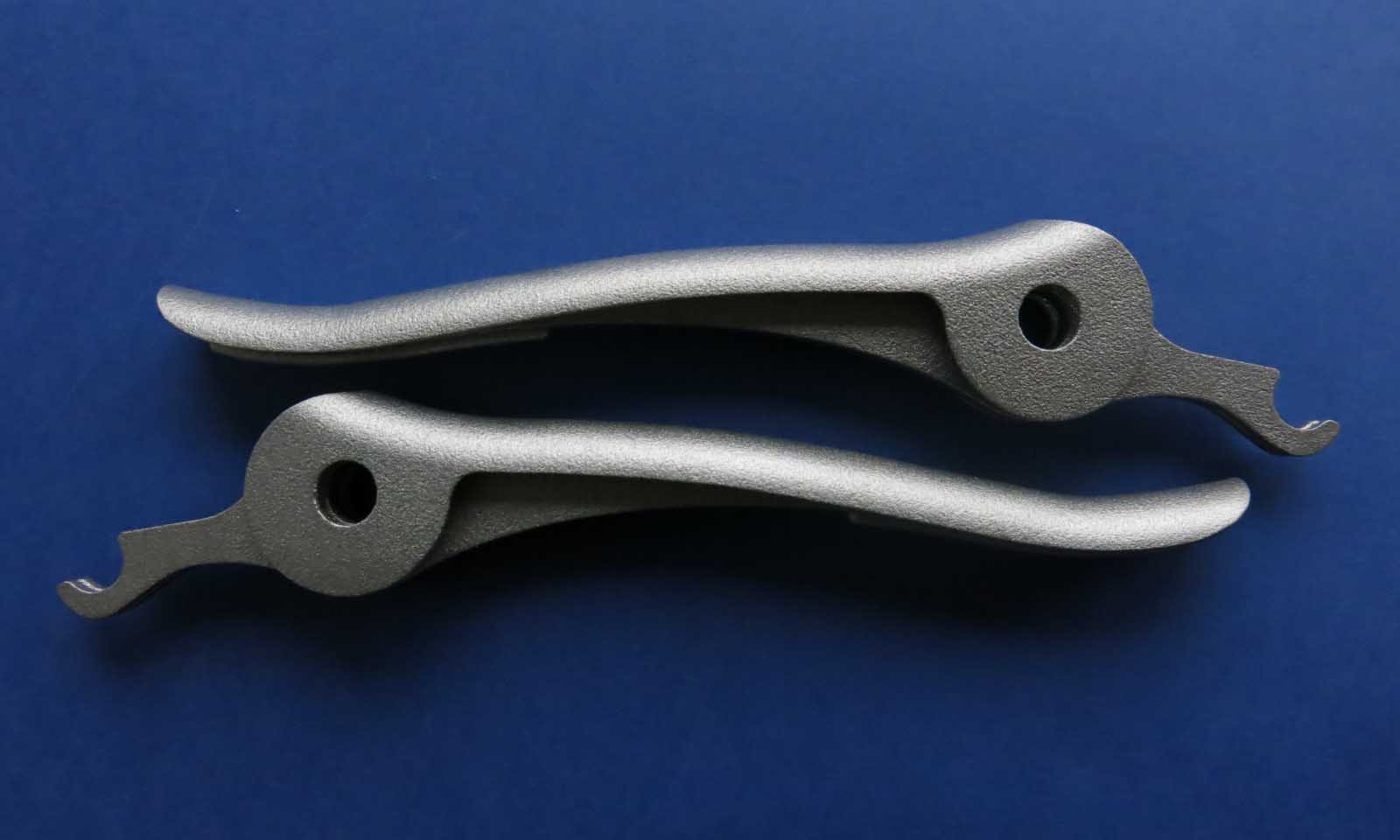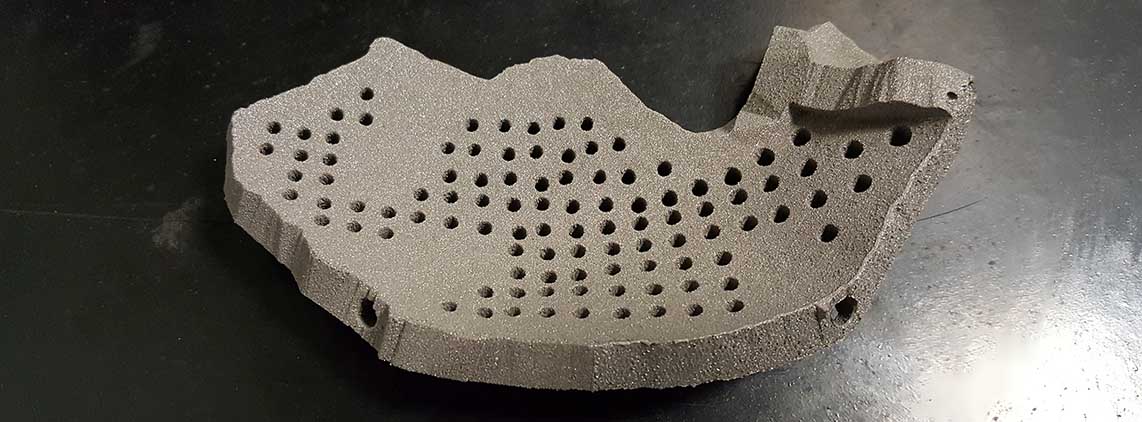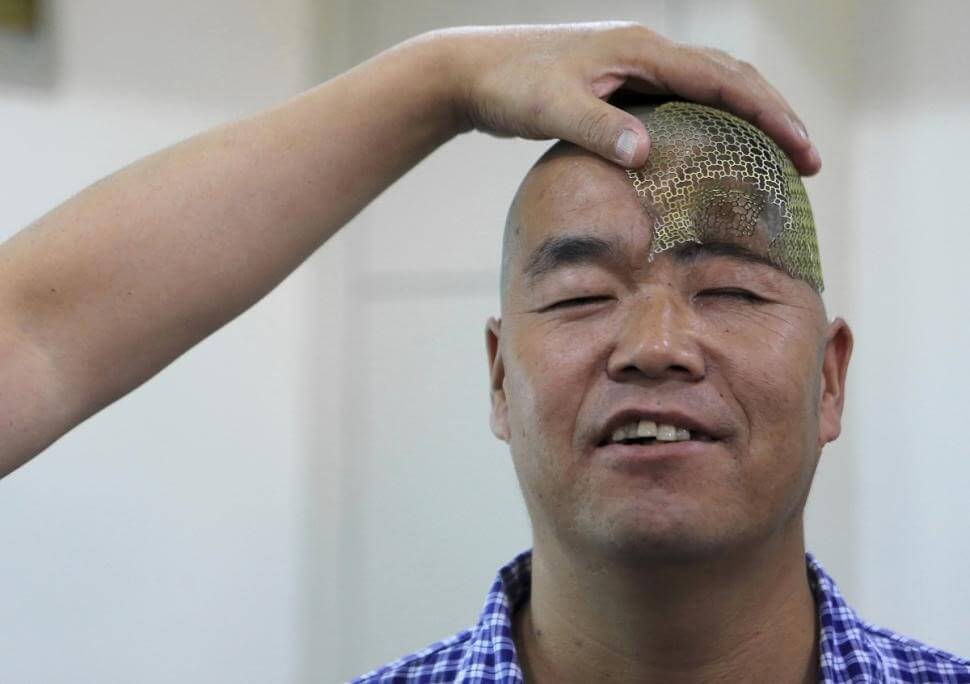3D Printing with Titanium Ti64: the complete Q&A
Posted By Capucine Lonjon on Jan 18, 2017 | 1 comment
For CES, we launched a new revolutionizing tool: Agile Metal Technology. It is a combination of tools that help you optimize and conduct efficiently a metal 3D printing project. We now provide Titanium Ti64. This article explains physical and mechanical properties of Titanium Ti64. To what extent can you use it? Discover all is needed to know on Titanium Ti64 in this article.
What does 3D printed titanium look like?
The raw titanium 3D printed parts have a matte and slightly rough surface. It is possible to use specific finishes to get smooth and shiny surfaces.
For what kind of parts is titanium really good for?
3D printed titanium is not for every project
It’s important to keep in mind that metal 3D printing is not beneficial for all projects. Before deciding to 3D print in titanium (or another metal) it is necessary to evaluate the relevance of using 3D printing compared to other production methods (casting, machining, cutting). For this purpose, you can use our Business Case tool, an AI we created to help you audit your 3D printing project; you will get a focused and actionable reporting to give you keys to launch your project. It is particularly useful for metal 3D printing, which is particularly complex.
All the benefits of 3D printing available for metal
Titanium 3D printing is particularly relevant and advantageous for:
– complex designs
– wireframe geometries
– non-demountable mechanism
– speed reduced
– reduced assembly time
– topology optimization/weight reduction
– short runs
– mass customization
– remote production
Which 3D printed titanium alloy for which industry
Every titanium alloy allows parts to have high tensile strength, light weight, and extraordinary corrosion resistance and extreme temperature tolerance.
There are two main titanium alloys for 3D printing: the Titanium 6Al-4V grade 5, that is directly available for order on our 3D printing platform, and the Titanium 6Al-4V grade 23, that we don’t provide directly on the platform.
Titanium 6Al-4V grade 23 is an alloy is biocompatible, and commonly used for implants and prostheses. We do not provide it directly on our platform, but if you’re interested in a 3D printing project in this material, you’re invited to contact our sales team for a quote.
The grade 5 6Al-4V titanium is suitable for prototypes and functional parts in the aerospace and automotive fields and for military applications. It is also an excellent material for the manufacture of parts with complex geometry, precisions or production tooling and injection molding.
To learn more about for 3D printing applications in general, see our dedicated web page.
How precise is the titanium 3D print?
Today, we can achieve a 30µm per layer. For comparison, our standard resolution for 3D printed plastic is 100 – 150µm; and our high definition layer thickness is 60µm.
Can I print moving parts with titanium?
It is absolutely possible to print moving parts with titanium, and this is one of the great advantages of metal 3D printing.
If supports are accessible, enclosed parts are possible. Interlocking parts are also possible, it only depends on the interlocking part’s orientation, compared to the Z axis. Keep in mind when designing your part that a minimum clearance of 0.2mm between parts is required.
Which technology is used to 3D print titanium parts?
Titanium can be 3D printed with both SLM and DMLS technologies. At Sculpteo, we 3D print titanium with DMLS technology (Direct Metal Laser Sintering). We use EOS M280 and M290 machines. Learn more on the different metal 3D printing technologies in our dedicated article.
How does the DMLS 3D printer work?
DMLS (Direct Metal Laser Sintering) is an additive manufacturing method. It creates parts additively by sintering fine metal powder particles, to fuse them together locally. Like in the SLS process, your metal part will be created layer by layer, according to your 3D model. A major difference is the sintering temperature (1510°C compared to 160°C to 200°C for polyamide).
DMLS have many advantages among which building extremely complex geometries, including free-form surfaces, deep groves, and cooling channels within injection molding tooling. DMLS also reduces turnaround time, which is to take into account when choosing your manufacturing process.
How much does it cost to 3D print in titanium with a DMLS 3D printer?
Titanium powder is an expensive metal material. On our platform, once you upload your design, your 3D printing price will be calculated automatically.
You can get an instant quote for free right now: just upload your design!
If you don’t have a 3D file yet but have a project in mind, our Business Case, the first of the AMT (Agile Metal Technology) suite, will ask you questions and give you an approximation of your 3D printing project cost. You can try Business Case, the first AI for 3D printing.
One of the main drivers of the cost of 3D printing in metal is trial and error: because of a lack of expertise, most projects need several attempts before getting their design right for titanium 3D printing. Our 5 upcoming Agile Metal Technology tools will reduce this back-and-forth cost by helping you evaluate the best design according to thermic constraints, in terms of supports, structure, and eventually post-process. What’s more, the tools that already exist to audit and optimize a 3D file for metal 3D printing are incredibly expensive and are not affordable for entrepreneurs or small and medium size companies. These tools make metal additive manufacturing affordable for a larger public than it is possible today.
Are there specific 3D design constraints for titanium 3D printing?
We are preparing 5 tools to complete the Business Case: the Agile Manufacturing Technology (AMT).
In many ways, metal 3D printing can be more complex than plastic 3D printing. When designing your part, you have to take into account: _
– thermic constraints that the part endures during the printing process. In fact, the part can become quite distorted compared to your initial 3D design, because of the high temperature that’s applied during printing. There are ways to design your parts specifically in order to reduce these thermic constraints. Our second AMT tool, the Smart Design Optimiser, will provide a thermal behavior simulation, for you to anticipate distortion.
– that one advantage of metal 3D printing is to optimize the amount of material used to fabricate the final part. This is also important when designing your metal part, as the material is fairly costly. Our third AMT tool, Automatic Lattice Generator, will evaluate the forces applied to your final parts, and accordingly give the advice to reinforce or lighten (or even suppress) some parts of your design.
– DMLS printing requires supports. These supports should be taken into account when designing as well since they will influence the thermic properties of the part during the printing. Our fourth AMT tool, Interactive Support Generator, will suggest different possibilities for optimized supports.
– post-processing. In fact, designing a part is not limited to considering 3D printing phase. It’s important to consider what post-process will undergo your 3D printed part. Our 5th AMT tool, Post-Processor will help you determine what finishes are needed to your part to get into the whole manufacturing process.
What kind of finishing can I get?
Metal 3D prints finishes are much more complex and technical than plastic 3D prints finishes. Our team of metal 3D printing engineers is dedicated to working with you to evaluate your project and make sure your 3D model suits your needs perfectly. They’ll help you choose the best post-processing strategy, with finishes such as polishing, grinding, turning, milling, drilling, threading, heat treatment.


 Connect with Google
Connect with Google Connect with Facebook
Connect with Facebook

